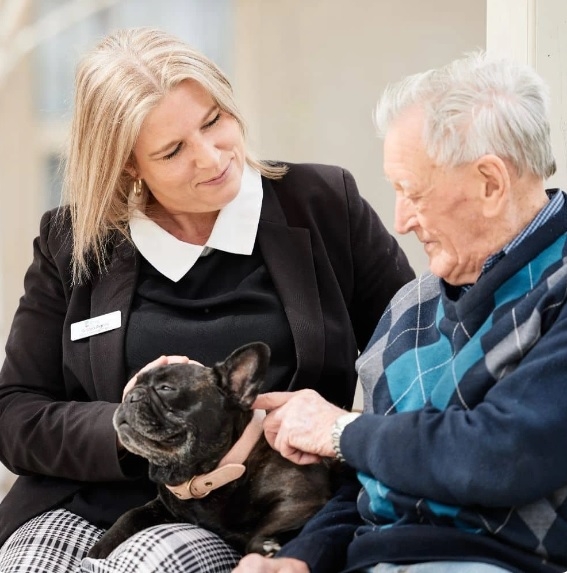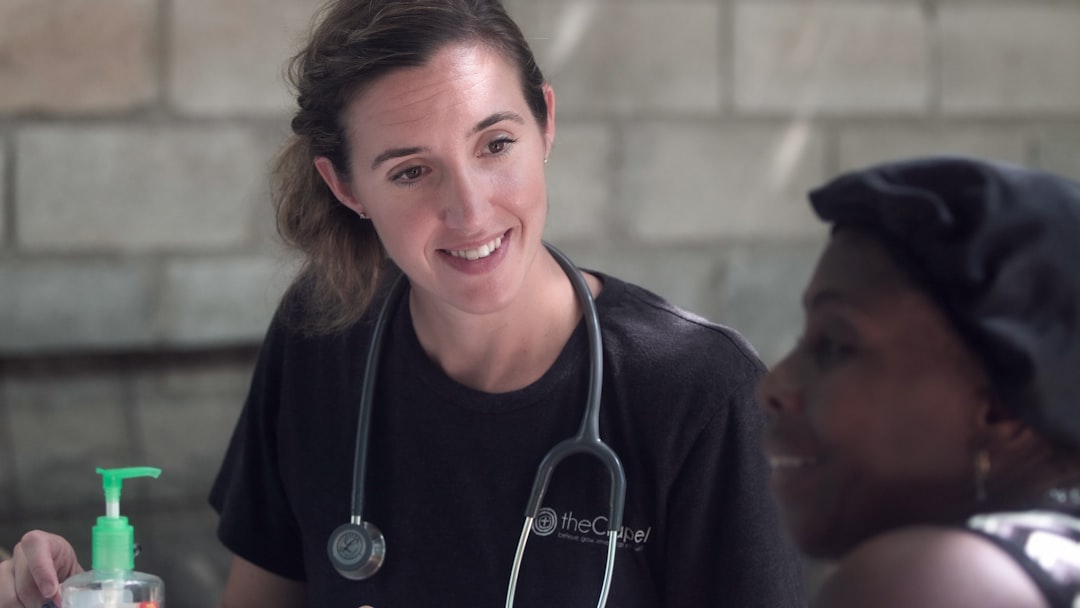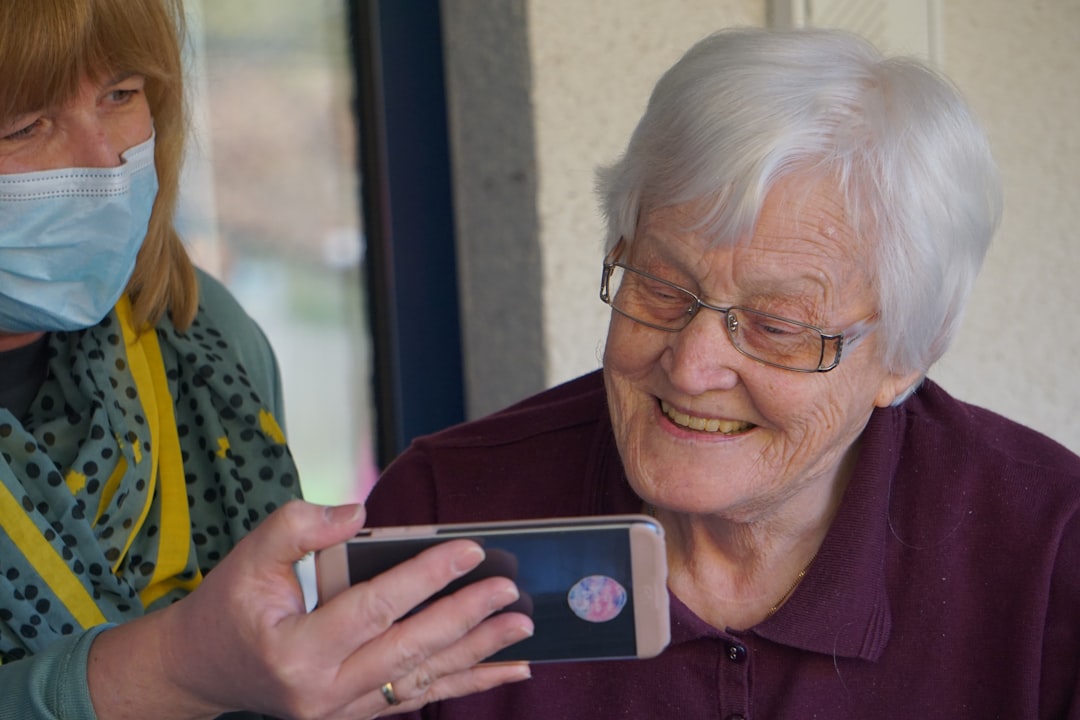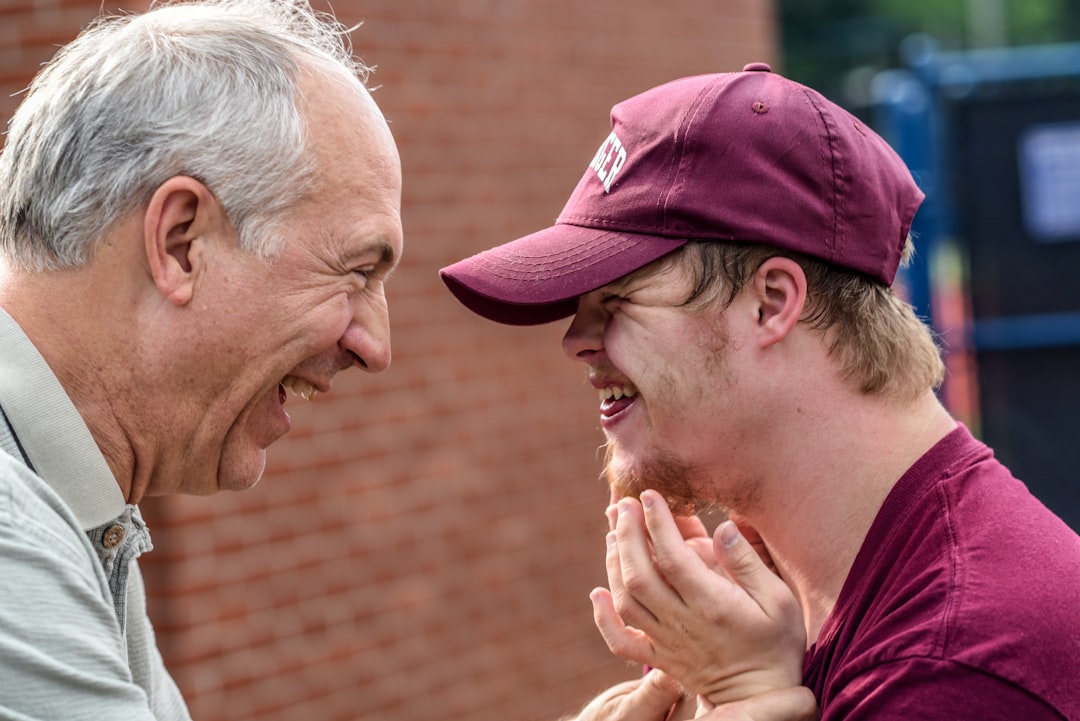

Respite care is a valuable service that provides much-needed relief to both caregivers and care recipients. For caregivers, respite care offers the opportunity to take a break from their caregiving responsibilities, allowing them to rest and recharge both physically and emotionally. This time away can help prevent burnout and reduce feelings of stress and overwhelm.
Care recipients also benefit from respite care by having the chance to socialize with others, engage in activities that they enjoy, and receive specialized care from trained professionals. Respite care can improve their quality of life and overall well-being by providing them with a sense of independence and autonomy.
By utilizing respite care services, caregivers can feel confident that their loved ones are in good hands while they take some time for themselves. This temporary separation can strengthen their relationship with the care recipient by preventing resentment or feelings of obligation.
Overall, respite care is a win-win solution for both caregivers and care recipients. It allows caregivers to prioritize self-care and maintain their own health while ensuring that their loved ones receive the support and attention they need. The benefits of respite care extend beyond just physical health - it also promotes emotional well-being and strengthens relationships.
Caring for a family member who requires ongoing assistance due to age, illness, or disability can be a rewarding experience, but it can also be overwhelming. Many families in Mornington find themselves balancing caregiving with their own personal, work, and family obligations. Respite care provides a vital service for families by offering temporary relief, allowing family caregivers to take a break, recharge, and return to their caregiving role with renewed energy and focus.
Respite care offers families the flexibility they need to manage caregiving responsibilities more effectively. It provides caregivers with the opportunity to attend to their own health and personal needs, whether it’s taking time for rest, attending medical appointments, or simply enjoying time away from caregiving duties. This break can be essential in preventing caregiver burnout, which can negatively affect both the caregiver and the person receiving care. Without respite, caregivers can become overwhelmed and may struggle to continue providing the level of care their loved ones need.
For families in Mornington, respite care comes in a variety of forms, including in-home care and short-term stays at residential care facilities. In-home respite care allows the family member to continue living in their familiar surroundings while receiving the care and attention they need. Trained professionals visit the home to assist with daily activities such as personal care, meal preparation, and companionship, giving the caregiver a much-needed break without having to leave their home. Alternatively, residential respite care provides temporary care in a safe and supportive environment, allowing caregivers to take extended breaks while knowing their loved one is in capable hands.
The benefits of respite care extend beyond the caregiver’s well-being. When caregivers are able to take breaks, they can return to their duties with a clearer mind and more energy, which ultimately improves the quality of care provided to their loved one. Respite care also allows families to better manage the physical and emotional challenges of caregiving. Having regular breaks can help reduce stress levels, increase patience, and prevent feelings of resentment or frustration, which can sometimes arise when caregivers feel overwhelmed.
Respite care can also offer additional benefits for the person being cared for. For individuals who may be elderly, disabled, or chronically ill, respite care provides the opportunity to receive personalized care in a different setting, often involving new activities and socialization. This can improve their quality of life and give them a chance to engage with new people, which can be especially important for individuals who may experience loneliness or isolation.
In Mornington, respite care services are designed to offer tailored solutions for families, ensuring that both the caregiver and the care recipient are well-supported. With respite care, families can manage caregiving responsibilities more effectively, ensuring that both caregivers and loved ones are happy, healthy, and well-cared for.

When it comes to making decisions about the care of our elderly loved ones, peace of mind is paramount.. Choosing Mornington Aged Care for your family can provide exactly that - a sense of reassurance that your loved one is in good hands. One of the top benefits of selecting Mornington Aged Care is the quality of care provided.
Posted by on 2024-11-28

Community partnerships and involvement play a crucial role in the success of Mornington Aged Care's mission to transform lives every day.. By working together with local organizations, businesses, and volunteers, we are able to provide our residents with the highest quality of care and support. Through community partnerships, we are able to offer a wide range of programs and services that cater to the unique needs of each individual resident.
Posted by on 2024-11-28

Are you looking to explore the exceptional senior living options at Mornington Aged Care?. We understand that choosing a care facility for yourself or a loved one is a big decision, and we want to make sure you have all the information you need. To schedule a tour of our community and discover the secrets of exceptional senior living, simply give us a call or send us an email.
Posted by on 2024-11-28

Making decisions about the care of our loved ones can be one of the most challenging and emotional experiences we face.. When it comes to choosing a place like Mornington Aged Care for our elderly family members, it is crucial to consider all factors to ensure they receive the best care possible. First and foremost, it is important to do thorough research on different aged care facilities in the area.
Posted by on 2024-11-28
This article needs additional citations for verification. (March 2013) |

The Mornington Peninsula is a peninsula located south of Melbourne, Victoria, Australia. It is surrounded by Port Phillip to the west, Western Port to the east and Bass Strait to the south, and is connected to the mainland in the north. Geographically, the peninsula begins its protrusion from the mainland in the area between Pearcedale and an area north of Frankston. The area was originally home to the Mayone-bulluk and Boonwurrung-Balluk clans, and formed part of the Boonwurrung nation's territory prior to European settlement.
Much of the peninsula has been cleared for agriculture and settlements. However, small areas of the native ecology remain in the peninsula's south and west, some of which is protected by the Mornington Peninsula National Park. In 2002, around 180,000 people lived on the peninsula and in nearby areas, most in the built-up towns on its western shorelines which are sometimes regarded as outlying suburbs of greater Melbourne; there is a seasonal population of around 270,000.[1] On 30 June 2017, the Mornington Peninsula population was recorded at 163,847 people.[2] However, in the peak of summer the population increases to 225,000–250,000 people each year, so that it becomes the most populous coastal holiday area in Victoria, with a larger population than Hobart.[3]
The peninsula is primarily a local tourist region, with popular natural attractions such as the variety of beaches, both sheltered and open-sea and many scenic sights and views. Other popular attractions include the various wineries, mazes and the diverse array of water sports made available by the diversity of beaches and calm waters of Port Phillip and Western Port. Most visitors to the peninsula are residents of Melbourne who camp, rent villas and share houses or stay in private beach houses.
The peninsula was formed by the flooding of Port Phillip Bay after the end of the glacial period about 10000 BC.[4] It may have extended into Port Phillip at various times, most recently between 800 BC and 1000 AD when Port Phillip Bay may have dried out.[5]

Indigenous Australians of the Mayone-bulluk and Boonwurrung-Balluk clans lived on the peninsula as part of the Boonwurrung People's territory prior to European settlement.[6] The territory hosted six clans who lived along the Victorian coast from the Werribee River across to Western Port Bay and Wilsons Promontory. The peninsula may have been home to between 100 and 500 people prior to European settlement.
The first European settlement on the Mornington Peninsula was also the first settlement in Victoria, situated in what is now Sorrento. The Sullivan's Bay settlement was a short-lived penal colony established in 1803, 30 years before the establishment of Melbourne, by Lieutenant-Colonel David Collins (1753–1810).[7]
At the time of European settlement in 1803[8] much of the Mornington Peninsula was covered with she-oak forests. These were quickly cleared to provide firewood for the growing city of Melbourne, and much of the peninsula was then covered with fruit orchards. Nevertheless, much natural vegetation still exists, especially in an area of bushland in the south known as Greens Bush, and the coastal fringe bordering Bass Strait and Western Port Bay. Most large areas of bushland are now included within the Mornington Peninsula National Park.
As professional farming has declined, hobby farmers with an interest in the aesthetic and the natural environment have taken over much of the peninsula. This has led to an expansion of natural bushland on private property, and many native species, such as koalas, are becoming increasingly common. The local council also has a slight lean towards sustainable practices.[citation needed]
On 17 December 1967, Prime Minister Harold Holt went swimming at Cheviot Beach on what is now Point Nepean National Park. At the time, however, it was still a restricted area. Holt, who was 59 and had had a recent shoulder injury, plunged readily into the surf. He disappeared from view and was never seen again. Despite an extensive search his body was never found. He was officially presumed dead on 19 December 1967.
In 2016, 17.8% of people in Mornington Peninsula Shire were born overseas.[9] 8.9% of the total population were born in the United Kingdom being the largest migrant group in the region.[9] 1.4% were born in New Zealand, 0.7% were born in Italy, 0.6% were born in Germany and 0.6% were born in the Netherlands.[9] This was followed by smaller migrant groups from Ireland, United States of America, South Africa and Greece.[9]
While 88.9% of the population speak English exclusively, the Mornington Peninsula population can speak other popular languages.[9] 1.0% speak Italian, 0.7% speak Greek, 0.4% speak German, 0.3% speak Mandarin and 0.2% speak French.[10]

The peninsula extends from the mainland between Pearcedale and Frankston in a south-westerly direction for about 40 km (25 mi) at a width of about 15–20 kilometres (9.3–12.4 mi). It then begins to extend roughly 15 km (9.3 mi) in a west/north-westerly direction and tapers down to a width of about 2–3 km (1.2–1.9 mi) before terminating at Point Nepean. Much of the topography is flat in the north where it connects to the mainland, however moving south-west, it soon becomes hilly, culminating in the central hilly landscapes of Boneo, Main Ridge, Red Hill, Tuerong and Moorooduc. The highest point, Arthurs Seat, located unusually close to the shoreline, stands at 305 metres (1,001 ft) above sea level. The peninsula hosts around 190 km (120 mi) of coastline.

Its eastern shorelines meet many mangroves and mudflats in the waters of Western Port before it tapers down to form Crib Point, Stony Point and Sandy Point at the peninsula's most south-easterly point. In the south-east between Sandy Point and West Head, the mudflats give way to sandy beaches which in turn become more and more rocky further south. In the south the peninsula meets Bass Strait and the coastline becomes very rocky between West Head and Cape Schanck. The coast between Cape Schanck and Point Nepean consists of a long slow curvature of open-sea surf beaches, many too dangerous to swim in. Its western shorelines form various headlands and bays in the sheltered waters of Port Phillip, hosting many shallow safe beaches.
The western coastline facing Port Phillip starts at the narrow bay entrance, The Heads or The Rip, and proceeds as a series of gently curved bays defined by small rocky outcrops.
From an oceanic perspective, the Mornington Peninsula, together with the Bellarine Peninsula, separate the waters of Port Phillip from Bass Strait, except for a small gap known as The Rip, which also separates both peninsulas. The peninsula also separates the waters of Port Phillip and Western Port.
The Mornington Peninsula is crossed by many seismically active fault lines, monoclines, synclines and anticlines; the largest of which is the 100 km long Selwyn Fault which is capable of producing earthquakes of around 7.5 magnitude.[citation needed] The Peninsula experiences many minor earthquakes every year, but most are too small to be felt. The last strong earthquake to rock the Peninsula had a magnitude of 5.0 and occurred on 7 July 1971 at 7:55 am AEST with its epicentre off Flinders, along the southern end of the Tyabb Fault.

The Mornington Peninsula is located over 40 km south-east of Melbourne. As of 2016 it has a population of 154,999 which can swell up to 250,000 during the summer months. The majority of the Mornington Peninsula is administered by the local government area of the Shire of Mornington Peninsula, with southern areas of the adjoining City of Frankston and City of Casey forming part of the northern boundary of the region.



The peninsula is one of four biosphere reserves in Victoria, the other three being national parks, and the only one with a resident population that reaches some 250,000 people during the peak tourist season. Some of the major parklands on the peninsula include:
Land:
Marine:
A sewage outlet near Boag Rock, a couple of kilometres[quantify] up the coast from Gunnamatta Surf Beach, pumps treated sewage into the ocean which finds its way to swimmers and surfers at Gunnamatta during particular tidal conditions.[citation needed]
In March 2021, the Victorian State Government blocked a controversial project by energy company AGL to build a floating gas import terminal at Crib Point.[12]



The Mornington Peninsula is a notable wine region, producing small quantities of high quality wine from around 60 wineries. While most varieties are grown, the cool, maritime climate of the Peninsula is particularly noted for pinot noir.[13] Many wineries are open for public tastings and several have quality restaurants.
Apples were the staple product of the Peninsula for several generations, with whole trainloads being dispatched to the city and ports. The number of orchards has been dramatically reduced, however there are many other producers on the Peninsula, specialising in berries, cherries, and other fruits, as well as market gardens. There is increased interest in organic production, and there are even organic beef producers.
The Peninsula not only produces fresh products, with small-scale manufacturers of niche products as diverse as cheese, chocolate, chutney, jam, and olive oil. Local produce is also to be found at markets held around the Peninsula, such as the monthly market at Red Hill. A local organisation, Mornington Peninsula Gourmet, has been set up to support the many small producers on the Peninsula.
The peninsula is serviced predominantly by a network of roads. Public transport is limited to a bus service which services urban areas on the western shorelines and a train service for the eastern areas of the peninsula. The following methods of transport are available to access various regions of the peninsula:

The Mornington Peninsula has a long history of being a favourite holiday destination for residents of Melbourne with 24,000 holiday homes in the area.[14] Mornington Peninsula tourism generates 10 per cent of local employment opportunities and is an important component of the economy.[14] Popular tourism times are long weekends such as Cup Weekend and Queens Birthday, the week involving Christmas, Boxing Day and New Years, with the months of December and January being the peak tourist period. Most visitors to the peninsula are local to central Victoria. However, international visitors from Asian markets such as China have become increasingly attracted to the area with international visitors increasing by 3–4% in 2018.[15][16] Overall tourism on the Mornington Peninsula has also grown with a 20% increase in overnight trips in 2017, with newly established luxury hotels such as Jackalope Hotel increasing the popularity of the region.[15] 100,000 campers also enjoy the municipality's foreshore camping sites in the summer months for cheaper overnight trips.[16] Short-stay rental services such as Airbnb have also become popular among tourists with 3.7% of the region's housing stock listed on the website.[17]
The Mornington Peninsula is also the third most popular tourist destination in Victoria for day-trip visitors.[15] The suburb of Mornington has become a tourist hotspot with 1500 visitors traveling to the town's Main Street via ocean liners in recent years.[15]

Wealthier visitors to the peninsula usually own beach houses on large properties or with extensive views or beach access and as a result, there are very few established commercial hotels. There are however, many smaller motels priced to suit families and middle income earners. Large shared beach houses are also popular, although perhaps the most popular form of accommodation lie in the many caravan parks and camping grounds where many visitors own or rent on-site caravans and annexes or camp in tents. Camping is particularly popular on foreshore reserves where camping is permitted. Some visitors continuously book particular sites and many camping grounds have been camped on by the same family for 2 or 3 generations. For the unestablished tourist, these camping grounds must be booked anywhere from 1 to 5 years in advance for foreshore sites, while further inland sites are more easily available with at most a 3 to 6-month wait. It is estimated that around 30–40% of the houses on the peninsula are not owned by permanent residents reflecting the popularity of owned beach houses. Most of these 'beach houses' are owned by residents of Melbourne.

In addition to the national parks and golf courses, other notable tourist attractions include:

Some popular activities on the peninsula include:
Crime novel The Dragon Man by Garry Disher is set in various locations around the Mornington Peninsula.
{{cite web}}: CS1 maint: multiple names: authors list (link)
{{cite web}}: CS1 maint: multiple names: authors list (link)
{{cite web}}: CS1 maint: multiple names: authors list (link)
{{cite web}}: CS1 maint: multiple names: authors list (link)
If there can be any upside from having a loved one with dementia it's having a safe and positive home with some wonderful staff. I love my Mum so much and I am so pleased that the staff at Craigcare treat her with the care and respect she deserves. It's horrible not being able to do anything with regards to the Dementia so having Mum in a place where she feels comfortable and is attended to as she should be, at least lessens the worry that comes with having a loved one in care. Highly recommend Craigcare. Like most things, it's really the people that make the difference and Craigcare staff are wonderful 😊 Thank you all for making my Mum feel comfortable
Great care facility. Trust is important and the staff are nothing less than supportive. I’ve been really happy.
Beautiful home. The entire team and management group are so warm and friendly. The home has such a lovely warm atmosphere. The care has been wonderful. We'll be back for respite again soon!
I was blown away by the care and professionalism here. There was no question whatsoever that my parent’s care was the main priority of the staff at Craig Care. Being interstate I had the distance worry with no being able to see them, but everyone was extremely accomodating and respectful. Highly recommend.
The team at Craig Care led by Shona , Candice and Monica are doing a fantastic job with Mum. She can be difficult at the best time of times. The staffs patient and care is outstanding. Very comforting to know your mother is well cared for and loved by all the staff
The costs of respite care at Mornington Aged Care may vary depending on the length of stay and level of care required. It is recommended to inquire about fees and financial assistance options when arranging respite care.